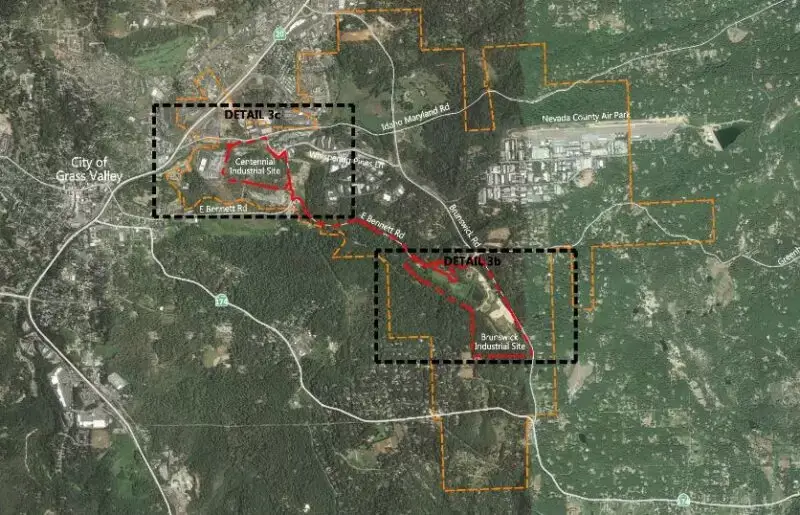May 3, 2023
Aaron Zettler-Mann, Interim Executive Director and Watershed Science Director at the South Yuba River Citizens League (SYRCL), holds a PhD in fluvial geomorphology. The following is an Op-Ed he wrote for the local news outlets:
The final Environmental Impact Report (EIR) for the proposed Idaho-Maryland Mine fails to adequately address the valid critiques of the draft EIR. Instead, shoddy science, bad computer models, baseless assumptions, and mountains of text hide the truth – the Idaho-Maryland Mine is bad for the environment and bad for our community.
In the world of academic writing, the peer review process serves as a check on the quality of the work that was done. This process ensures that the methods used were sound, appropriate, and the right conclusions are being drawn from the evidence. The EIR fails in this respect, making unrealistic false assumptions and drawing large conclusions based on unacceptably small sample sizes.
Rather than reanalyze problem areas and the critical shortcomings, the final EIR doubled down in an attempt to justify their false assumptions and inadequate sampling.
For a conclusion to be meaningful, the sample size must be appropriately representative. Of the core samples Rise Gold acquired from Emgold Mining, and the additional 67,500 linear feet of exploratory drilling Rise Gold conducted, they chose to test only 11 feet for potentially hazardous chemicals. Those 11 feet are supposed to accurately characterize more than 25 million tons of waste rock to be produced over the life of the mine. The testing for asbestos represents less than 2/10,000 of the total rock to be mined over the project lifespan. The Air Quality Board and Water Quality Board both state that the samples analyzed are inadequate to accurately characterize the potentially hazardous chemicals which could leach into our ground water, surface water, or be released into the air.
And the likelihood that most of the mine tailings will have to be stored on-site is high, because there is not a viable market to sell it as engineered fill in the Sacramento market, as the final EIR claims. There is no proof, such as signed contracts, for this claim. The sole evidence to support this claim is the 2018 Aggregate Sustainability 50-year Demand map sheet which does, in fact, show that the Sacramento area only has about 50% of gravel permitted based on the 50-year demand. They fail to note, however, that Placer County has roughly 60% more gravel permitted than demand and that Nevada County has about 25% more gravel permitted than demand. They further fail to recognize that the Yuba Goldfields area is a ready source of 685 million cubic yards of gravel owned by one of the oldest gravel producers in the State, which their business models suggest will supply the region with the necessary gravel to be used as engineered fill for more than 100 years.
Rise Gold and the EIR do a good job burying the reader in circular references to their own reports and cherry-picking information from reports and studies that support their false and misleading claims. The truth is their sampling is inadequate to understand the risks of the project and their assumptions about the project are faulty.
Don’t be fooled by the length of the document, this is bad science plain and simple. Join us at 9am at the Rood Center in Nevada City to tell the Planning Commission to recommend the rejection of the Final EIR. Sloppy science can’t get past us.


